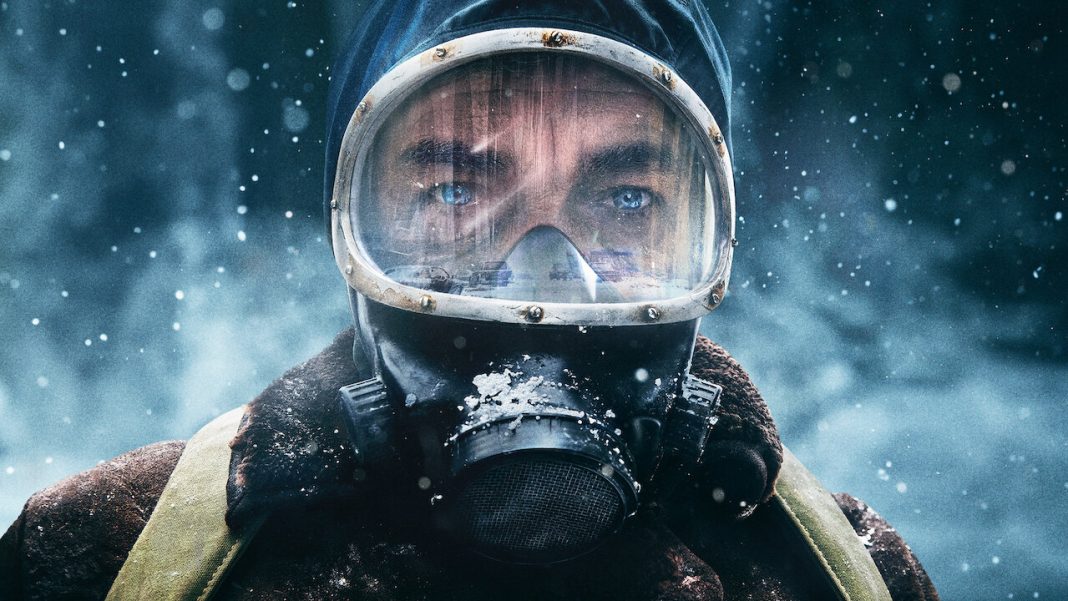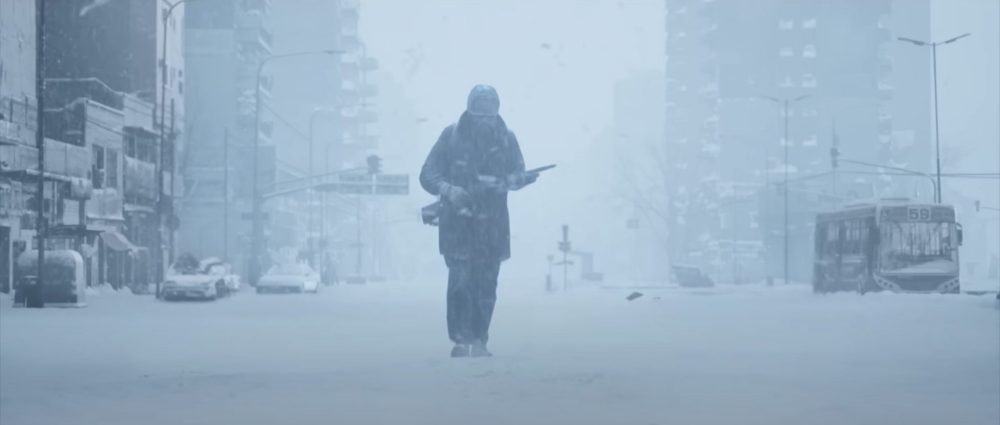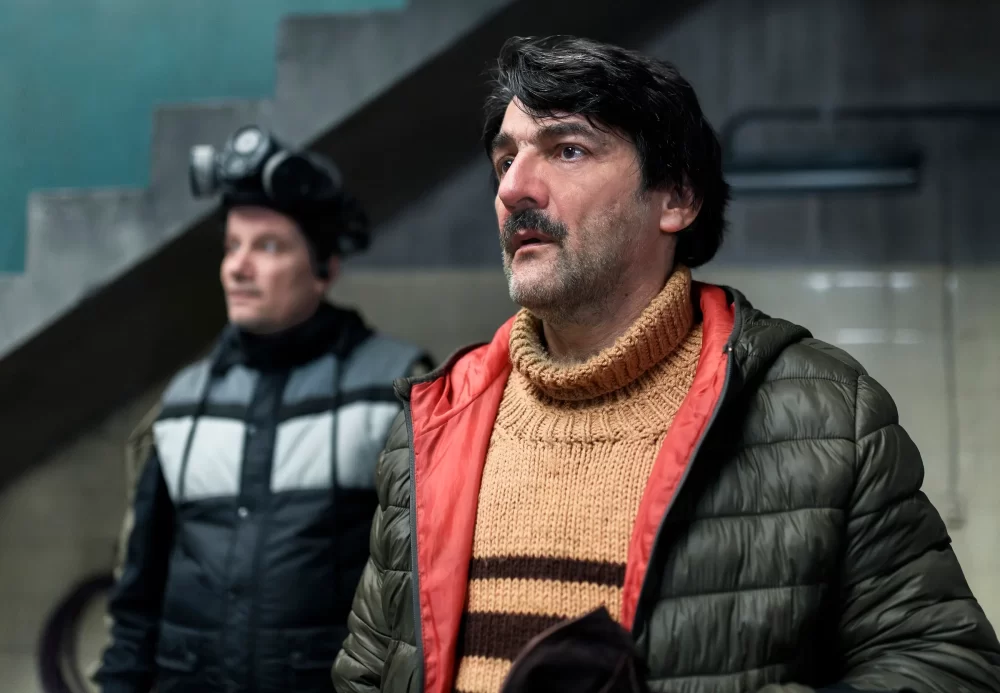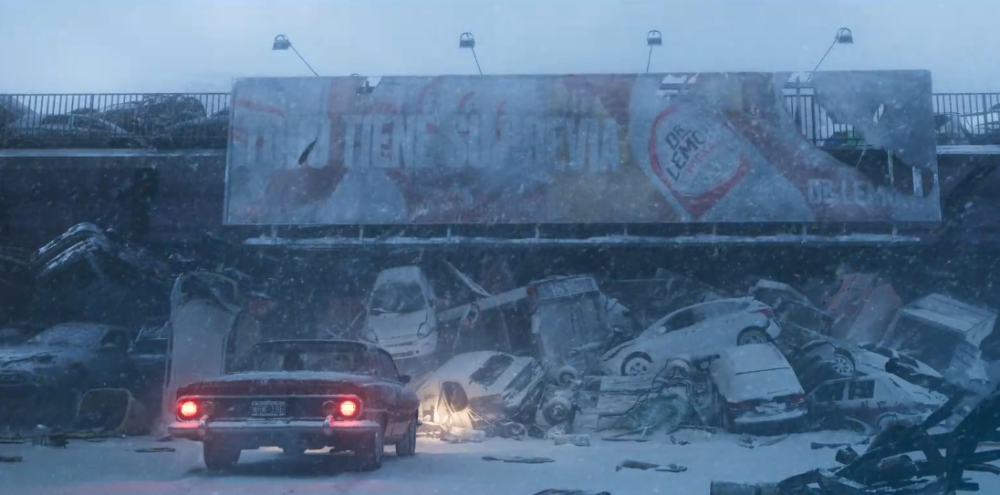We have been forced to become pessimists. This is what one of main characters from Argentina’s most prestigious comic, El Eternauta (1957), says at one point as he realizes the end of the world brings out the worst in humanity. It’s one of many simple yet poignant observations that make reading the comic such a joy. Written by Héctor Germán Oesterheld and illustrated by Francisco Solano López, the story follows a small group of old friends in Buenos Aires that try to survive a deadly snowfall that kills every living thing it touches. It’s the opening salvo of an alien invasion that, like all good postapocalyptic stories, shows how quickly people turn on each other.
It’s a visually striking concept and it excels at putting forth an invasion unlike any other, but what truly stands out from the comic is its commentary. It aims for a sociological appreciation of what people turn into in times of crisis, specifically in terms of Darwinism. This point right here frames the challenge any adaptation of El Eternauta will face when the opportunity arises to bring it to the small screen: letting the dialogue lead the way.
Argentinian producer, screenwriter, and director Bruno Stagnaro, in collaboration with Netflix and K&S Films, has taken up this challenge. This stab at the comic has gone the way of a multiple season TV show, and the result is a tense and smart take on the source material that is grounded in Argentinian specificity. But does it live up to Germán Oesterheld and Solano López’s original vision?
As mentioned above, El Eternauta is a sci-fi postapocalyptic yarn that follows a group of survivors as they deal with a slowly unfolding alien invasion. The group is led by Juan Salvo (Ricardo Darín), who fans of the comic will know as the titular Eternauta (more on this momentarily). Accompanying him are professor of physics Favalli (César Troncoso), his wife Ana (Andrea Pietra) and Lucas (Marcelo Subiotto). Two other characters round out the group, created specifically for the show, called Inga and Omar.
Without spoiling much for those who haven’t read the comic and are just being introduced to the world of Eternauta through the show, the series starts in a very different way to the source and it changes the viewers’ relationship with Juan Salvo at a fundamental level. In the comic, the titular figure makes a more shocking entrance, and it sets a whole other set of expectations with it. It’s such a deviation that the show’s title might not make sense to anyone for the entire first season (which is 6 episodes long). Essentially, you’re thrust into the snowfall situation after a bit of time is spent getting to know the characters in episode one, forgoing the crucial storytelling device Oesterheld employed to get things off to an unsettling start in the book. The story eventually realigns itself with the comic, to a degree, and then it’s all about survival.
While it’s tempting to bring in shows like The Walking Dead and The Last of Us here for comparison, the reality is El Eternauta had already done the things these shows explored way before any of them were conceived. Whereas these two shows stretch out their examinations of survival after the world has collapsed, El Eternauta injects more urgency to its crisis. There’s a lot said about survival in the process, but the show finds way to set itself apart from the pack thanks to the strength of Oesterheld and Solano López’s original idea. The deadly snowfall, a constant threat that requires survivors create makeshift insulated suits to go out and brave the killer particles (immortalized on the covers of countless El Eternauta collections that show the iconic closeup of Juan Salvo wearing a gasmask), adds a level of danger to the narrative that is not commonly found in other stories of its kind.
With zombies, you know what the situation is from the start, and it really doesn’t change its form that much. In The Walking Dead, the dynamics of survival are affected by human cruelty and selfishness. There are no different phases to the zombie apocalypse. The undead stay the same till the end. The snow in El Eternauta is but a mystery that signals the beginnings of something worse. That sense of the unknown really establishes a potent kind of dread that turns Buenos Aires into not just its own character, but a hostile one at that. Once a few reveals get their hooks in, all the dread that had been building up to them pays off and opens doors to the other horrors the invasion has in store.
The performances truly elevate the story, with Ricardo Darín’s Salvo really carrying the seriousness of the situation on his facial expressions. Troncoso’s Favalli complements Salvo beautifully, acting as both the voice of reason and of stubbornness simultaneously. In key moments, his newly minted “survival of fittest” views lead to some tense exchanges that threaten to derail his decades-long friendship with Salvo. These scenes are among some of the strongest. The emotion on display hurts to watch knowing what’s at stake, and they carry an anxious energy that’s impossible to ignore.
That said, it’s the dialogue that ultimately makes the comic superior to the show. Oesterheld’s script is very literary minded in parts, though not to an inaccessible degree. Often, characters compare the situation they find themselves to those found in classic literature. Robinson Crosoe comes up a lot here. Favalli resorts to it constantly to compare their new existence to that of being stranded on an island with no escape in sight, much like it happens in Daniel Defoe’s 1719 adventure novel.
Additionally, conversations on how catastrophe requires a changing of moral codes to survive in a harsh new landscape are plentiful and engaging. They’re not mere survivalist arguments, where necessity engenders violence. They have more substance and they thrive in greyer areas. The show explores this with its version of Favalli as well, but it’s not nearly as eloquent as it is in the comic. While well written, the show just doesn’t capitulate on the richness of the original text. Instead, it caters the experience to a binge-hungry audience. The comic is one of the slowest burns in existence, but it thrives in it. The show streamlines some of it for a faster paced narrative.
El Eternauta is a great show that somehow manages to keep the original 1957 comic from coming off as stale or dated. Then again, the comic has never been considered any of those things. Its ideas are just that good, that unique. Most of it carries over beautifully to the TV show, and the team behind it did an excellent job of bringing some of the best components of the story over intact. Ultimately, though, it doesn’t reach the level of sophistication as the comic it’s based on. I highly recommend watching it simply because it really is well-realized, and because the performances are top-notch. It’s exceptional in how it brings the look and feel to of the comic to the small screen. The invasion in particular is legitimately terrifying. It’s just that what Oesterheld and Solano López created was and remains one of the best science fiction stories ever told. And it’s not easy to measure up to that greatness, especially when it’s the very basis for a new take on it.















Where’s the mass market comic reissue? We got one for Jupiter’s Legacy…
Comments are closed.